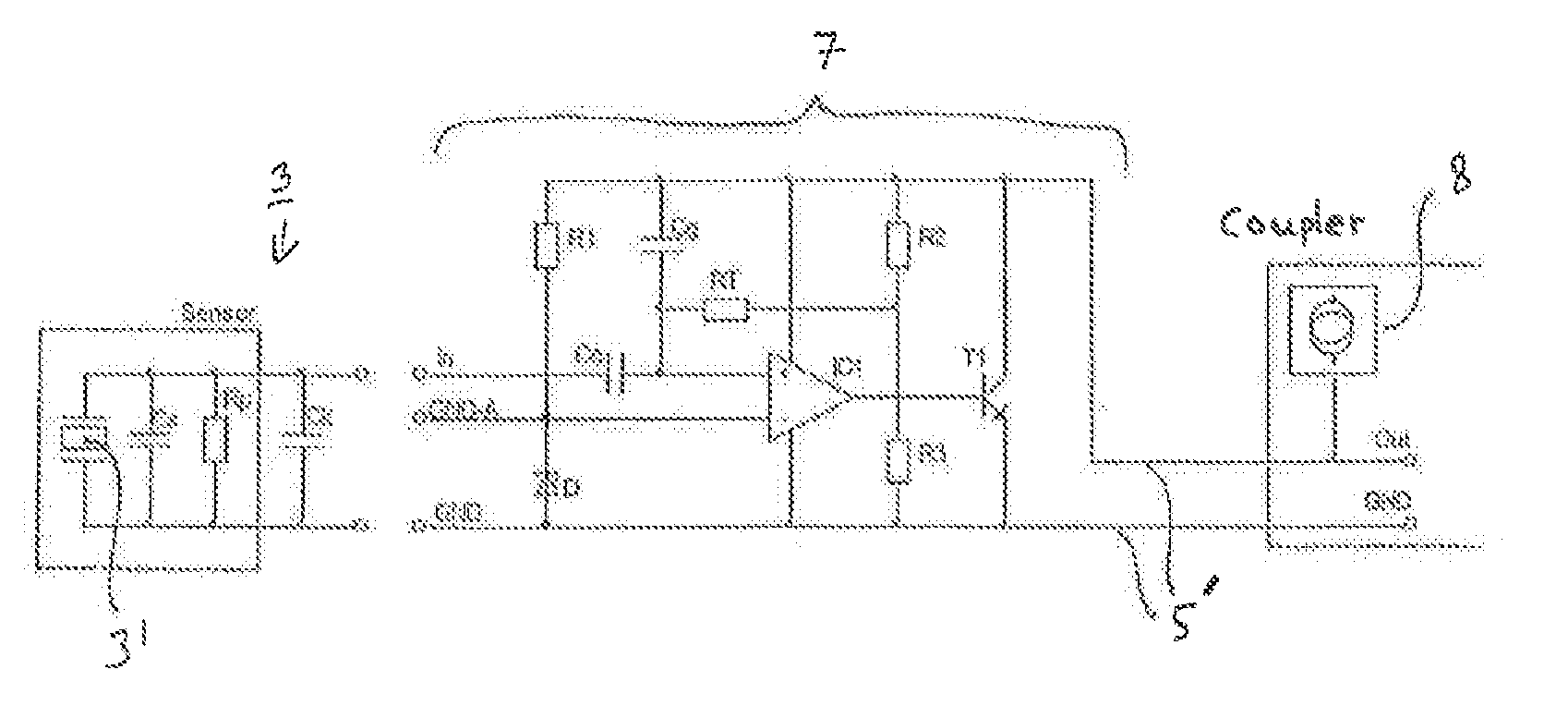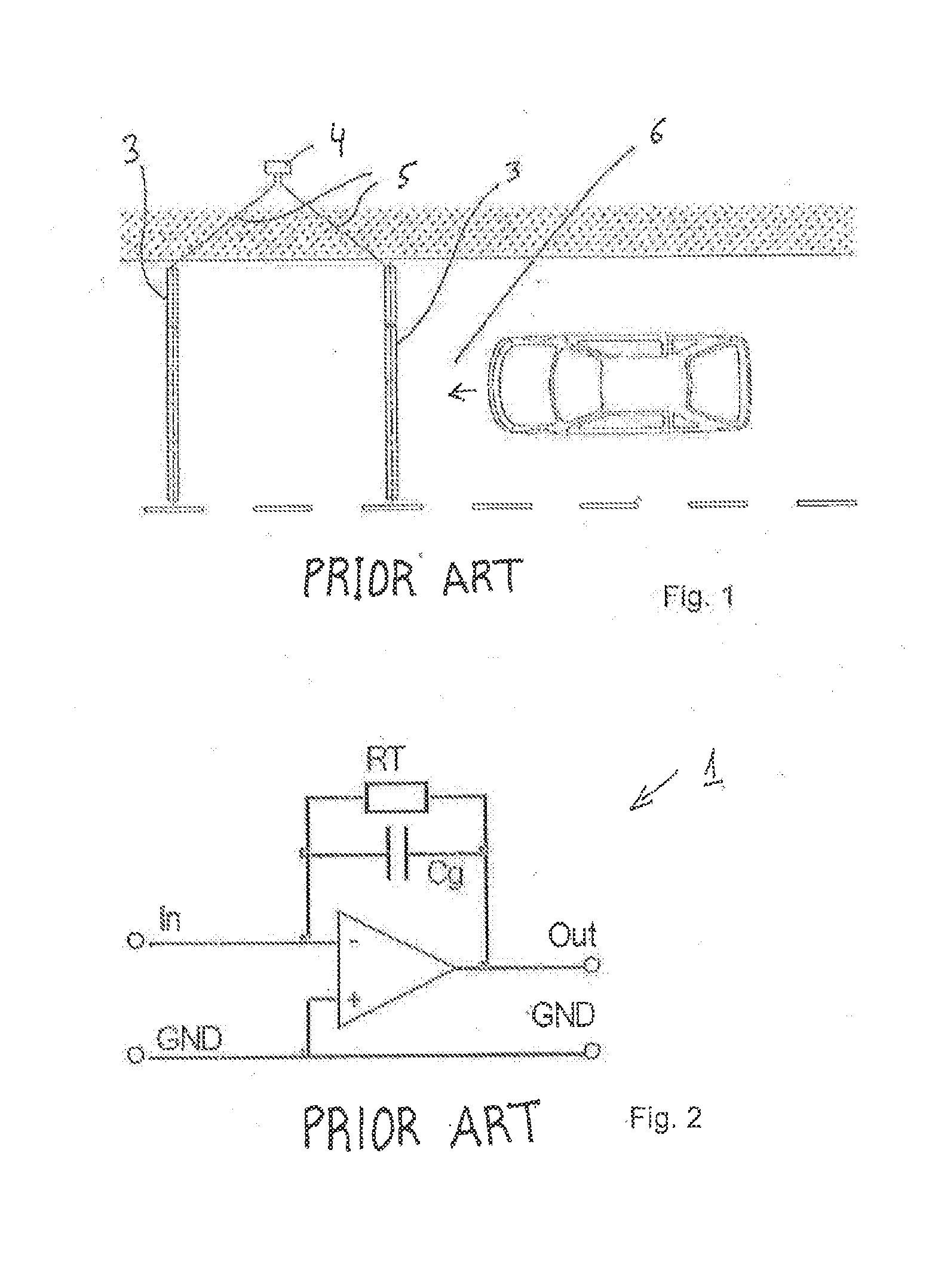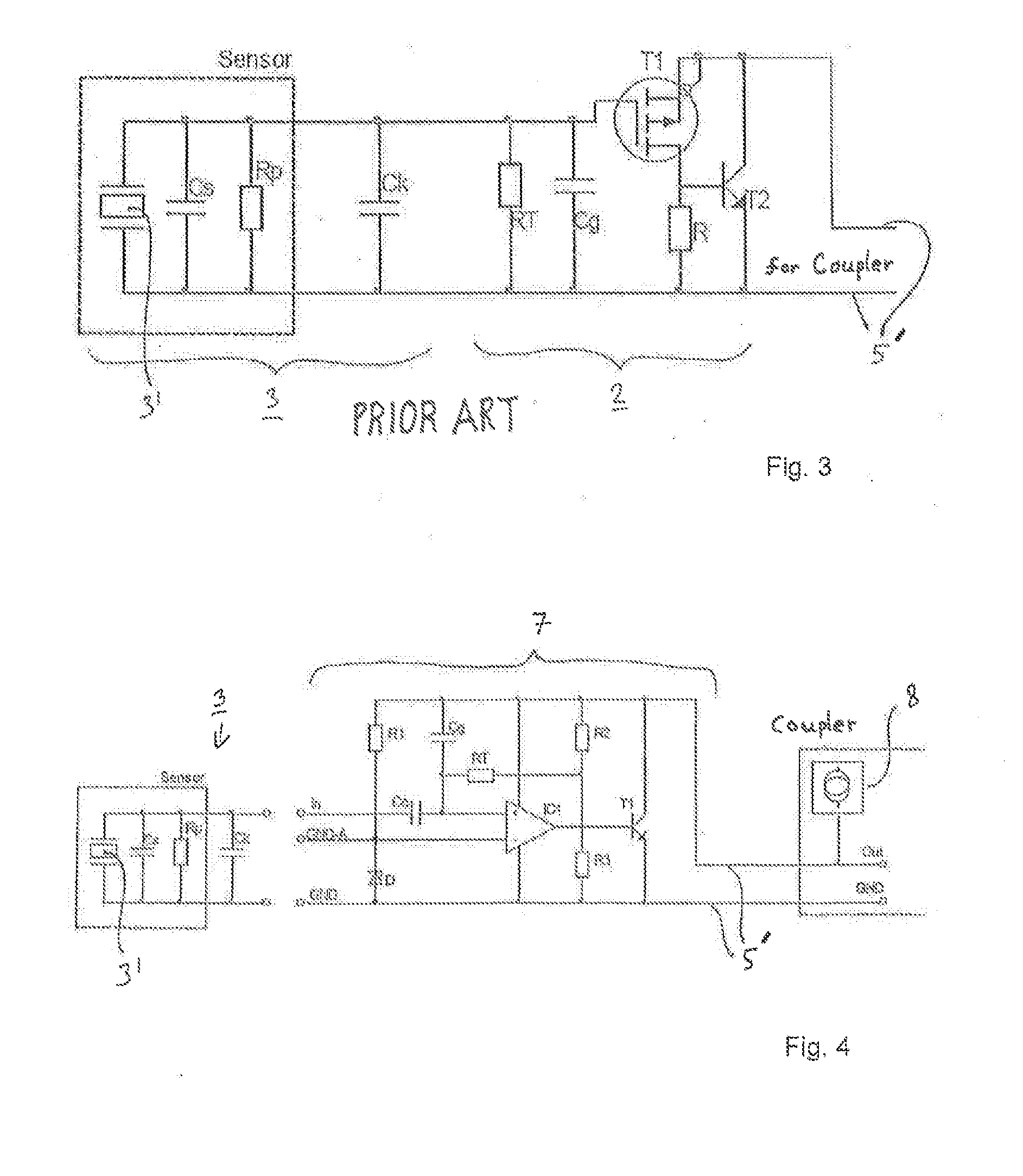Electronic circuit for a weight-in-motion sensor
a technology of electronic circuit and sensor, which is applied in the direction of weighing apparatus, electric variable regulation, amplifiers, etc., can solve the problems of high cost, high cost of highly insulating cables, and increase the cost of the system accordingly, so as to achieve less complex, less susceptible to damage, and cost-effective
- Summary
- Abstract
- Description
- Claims
- Application Information
AI Technical Summary
Benefits of technology
Problems solved by technology
Method used
Image
Examples
Embodiment Construction
[0034]FIG. 4 shows the inventive electronic circuit 7 that is insensitive with respect to the varying sensitivity caused by the capacitance changes of the sensors 3.
[0035]The components IC1 (integrated circuit) and T1 (impedance converter) form the active amplifier stage. The Zener diode D defines the initial quiescent value or the bias voltage in conjunction with the resistors R2 and R3. The sensitivity of the measuring chain can be adjusted with the capacitance Cg. In addition, the resistor RT forms the time constant of the measuring signal in conjunction with the resistors R2, R3 and the capacitance Cg. The capacitor Cc serves for decoupling the voltage across the Zener diode D from the sensor 3.
[0036]The entire circuit 7 is supplied with power by a power source 8 that is accommodated in a so-called coupler (coupler).
[0037]The inventive circuit according to FIG. 4 combines the advantages of both systems: the sensitivity is nearly independent of the input capacitance analogous to ...
PUM
 Login to View More
Login to View More Abstract
Description
Claims
Application Information
 Login to View More
Login to View More - R&D
- Intellectual Property
- Life Sciences
- Materials
- Tech Scout
- Unparalleled Data Quality
- Higher Quality Content
- 60% Fewer Hallucinations
Browse by: Latest US Patents, China's latest patents, Technical Efficacy Thesaurus, Application Domain, Technology Topic, Popular Technical Reports.
© 2025 PatSnap. All rights reserved.Legal|Privacy policy|Modern Slavery Act Transparency Statement|Sitemap|About US| Contact US: help@patsnap.com



